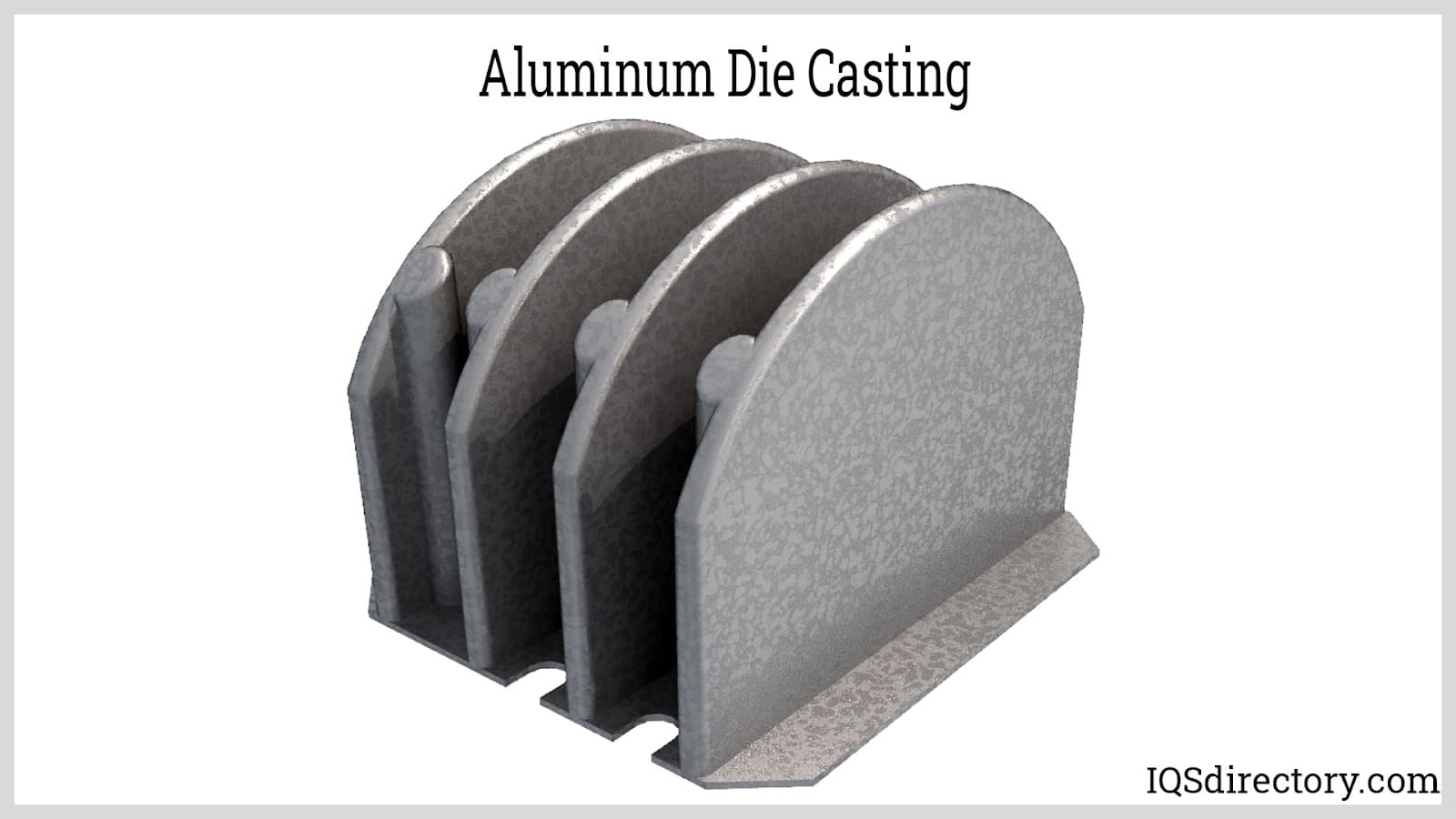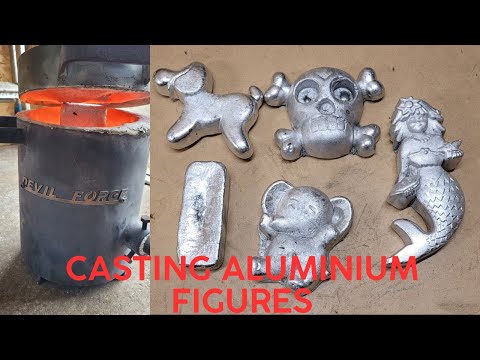Examine This Report about Stahl Specialty Company
Table of ContentsThe Buzz on Stahl Specialty CompanyNot known Incorrect Statements About Stahl Specialty Company The Best Guide To Stahl Specialty CompanyRumored Buzz on Stahl Specialty CompanyLittle Known Questions About Stahl Specialty Company.The smart Trick of Stahl Specialty Company That Nobody is Discussing

If you're making a metal item, you've likely considered utilizing aluminum as the base product. Pure aluminum has actually restricted applications, so it is typically combined with various other components, such as silicon, magnesium, and manganese to create alloys.
Various components and quantities produce a wide array of preferable physical and chemical buildings. And the Aluminum Organization (AA), based in North America, has actually developed specs that control light weight aluminum alloys' make-up, buildings, and classification. There are two sorts of light weight aluminum alloys wrought and cast. Factory workers develop these alloy types in various means, which significantly influences their attributes.
5 Easy Facts About Stahl Specialty Company Shown
Cast aluminum alloys are made by melting pure light weight aluminum and combining it with various other metals while in liquid kind. The mix is poured into a sand, pass away, or investment mold and mildew.

160.0 stands for a cast with a minimum of 99.60% light weight aluminum. The 4th digit, which comes after the decimal point, defines if the alloy is a spreading (xxx. 0) or an ingot (xxx. 1). Wrought aluminum alloys likewise begin by combining molten light weight aluminum with various other steels. In comparison to cast alloys, nevertheless, they are created right into their final shape with procedures such as extrusion, rolling, and flexing after the metal has solidified right into billets or ingots.
There are several small differences between wrought and cast aluminum alloys, such as that cast alloys can contain a lot more considerable quantities of other metals than wrought alloys. The most notable distinction in between these alloys is the fabrication procedure through which they will go to supply the last item. Apart from some surface area therapies, cast alloys will certainly leave their mold in virtually the specific solid form desired, whereas wrought alloys will certainly undertake a number of adjustments while in their solid state.
If you think that a wrought alloy might be the finest for your project, take a look at several of our articles that discuss more concerning certain wrought alloys, such as Alloy 6061 and Alloy 6063. On the other hand, if you assume an actors alloy would be much better for you, you can find out more regarding some cast alloys in our Alloy 380 and Alloy 383 write-ups (coming quickly).
The 8-Second Trick For Stahl Specialty Company
When choosing an aluminum factory for your production demands, it's important to research several aspects. Among one of the most important aspects to think about is the experience and competence of the factory. Foundry. Selecting a shop who has the ideal expertise of the aluminum casting process, and the profile to reveal for it, helps to have an effective end result for your job
Having the experience and industry expertise to craft your spreadings for ideal manufacturing and top quality outcomes will certainly streamline the job. Producing light weight aluminum castings requires a complex collection of processes to achieve the best results. When selecting a new light weight aluminum foundry to companion with, guarantee they have extensive industry experience and are knowledgeable about all facets of the light weight aluminum spreading process: design, production, product evaluation, and product testing.
The shop needs to likewise have a proven record of providing outstanding items that fulfill or go beyond consumer assumptions. Quality control must likewise go to the top of your listing when selecting a light weight aluminum foundry. By working with a certified shop that follows the requirements for quality assurance, you can protect the honesty of your product and guarantee it fulfills your specifications.
By choosing a business that supplies solutions that satisfy or exceed your item needs, you can be certain that your task will be completed with the utmost precision and performance. Different parts require different production techniques to cast aluminum, such as sand casting or die spreading.
5 Simple Techniques For Stahl Specialty Company
Die spreading is the name given to the procedure of developing complex steel elements via use molds of the element, likewise recognized as dies. The process utilizes non-ferrous steels which do not include iron, such as light weight aluminum, zinc and magnesium, as a result of the desirable residential or commercial properties of the steels such as reduced weight, higher conductivity, non-magnetic conductivity and resistance to corrosion.
Die spreading manufacturing is quick, making high manufacturing levels of parts very easy. It generates more parts than any various other procedure, with a high degree of precision and repeatability. To find out more regarding die spreading and die spreading materials made use of while doing so, read on. There are three sub-processes that fall under the classification of die casting: gravity pass away spreading (or irreversible mold and mildew spreading), low-pressure die casting and high-pressure die casting.
No matter the sub-process, the die spreading process can be damaged down into 6 actions. After the purity of the alloy is tested, passes away are produced. To prepare the dies for casting, it is important that the passes away are tidy, to make sure that no deposit from previous manufacturings remain. After cleaning, the ejection lubrication is applied to the die to guarantee a smooth release.
What Does Stahl Specialty Company Do?
The pure metal, additionally understood as ingot, is included in the heating system and maintained the molten temperature level of the metal, which is then moved to the injection chamber and infused into the die. The pressure is after that kept as the steel strengthens. As soon as the metal solidifies, the cooling procedure begins.
(https://lnk.pblc.app/pub/4920c349338804)
The thicker the wall surface of the component, the longer the cooling time as a result of the quantity of interior metal that likewise needs to cool. After the element is completely cooled down, the die cuts in half open and an ejection mechanism pushes the element out. Complying with the ejection, the die is closed for the next injection cycle.
The flash is the added product that is cast throughout the process. Deburring eliminates the smaller pieces, called burrs, after the trimming process.
Top Guidelines Of Stahl Specialty Company

Zinc is one of the most previously owned alloys for die spreading due to its lower price of raw products. Its corrosion resistance likewise allows the parts to be lengthy lasting, and it is one of the much more castable alloys due to its reduced melting factor.
As pointed out, this alloy is one of the most generally used, yet produces will, sometimes, select light weight aluminum over zinc as a result of light weight aluminum's production benefits. Light weight aluminum is extremely economical and among the much more functional alloys. Aluminum is used for a variety of various products and sectors anything from window structures to aerospace materials.